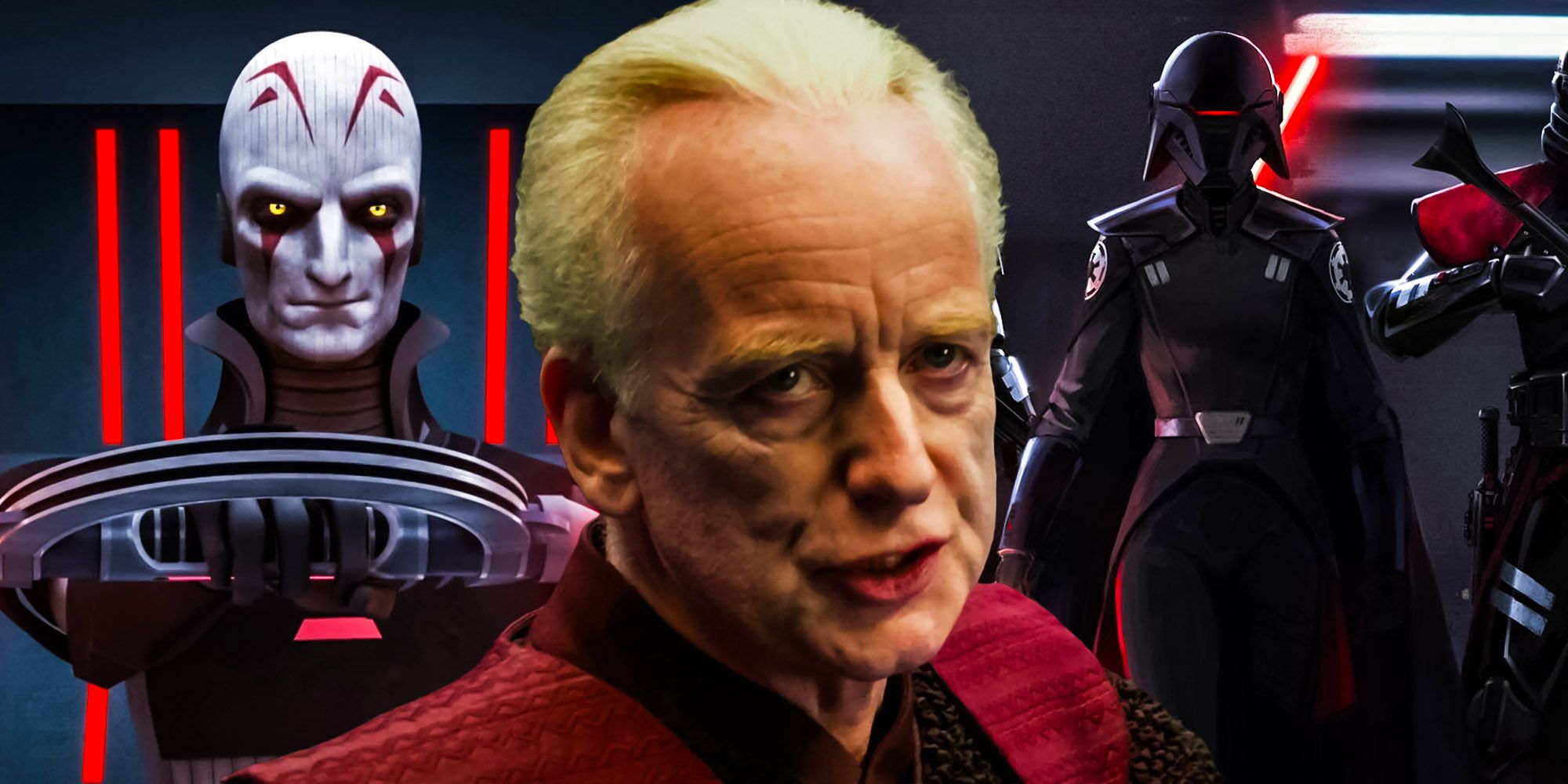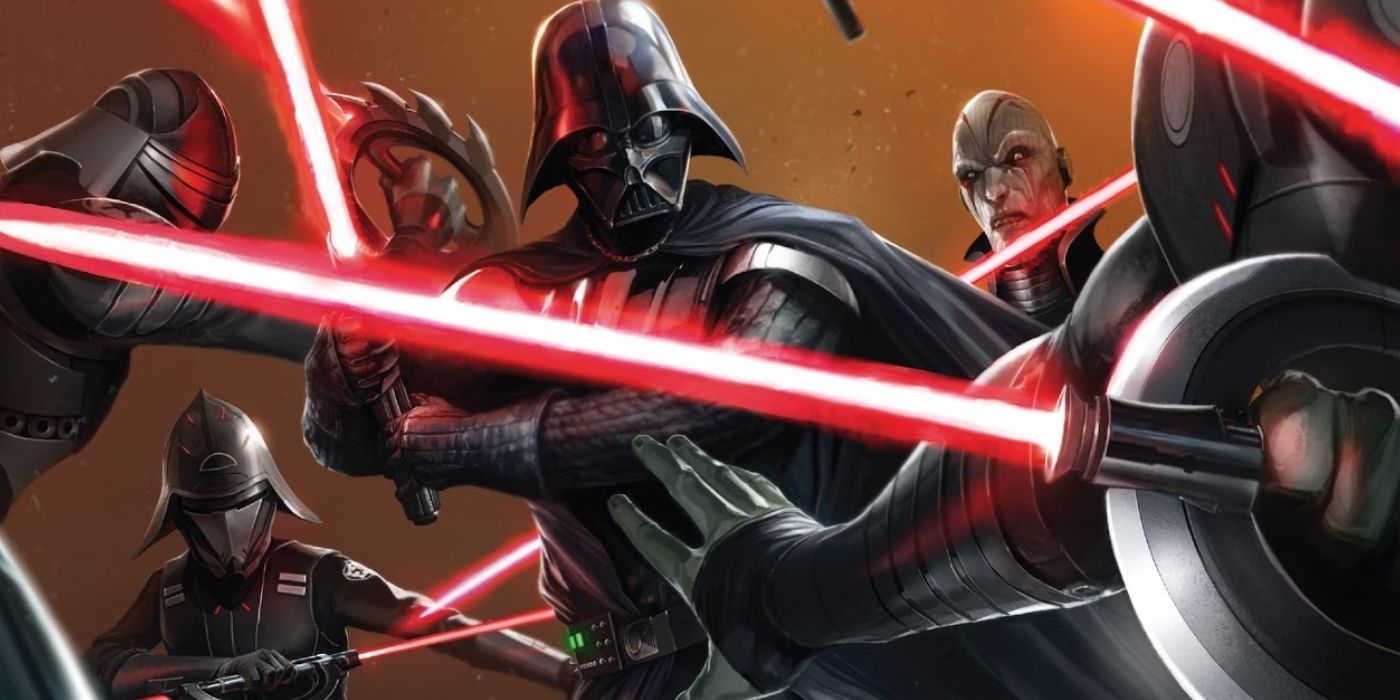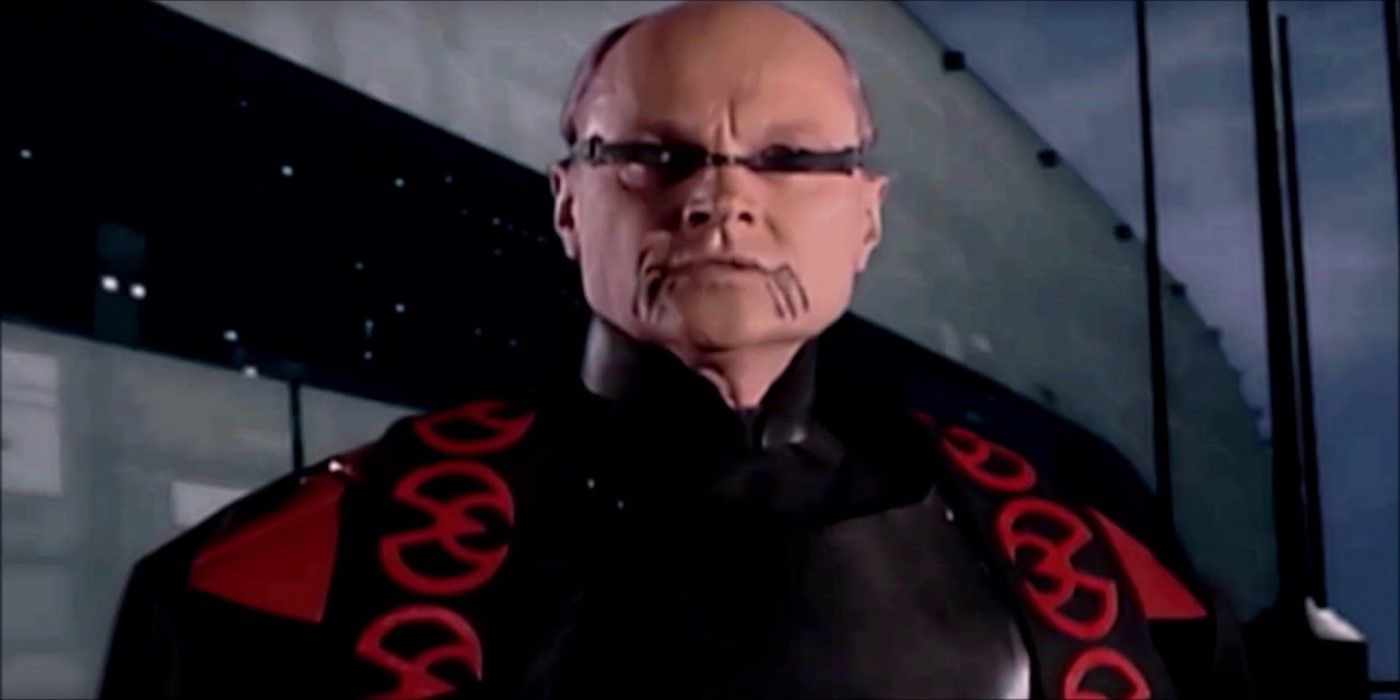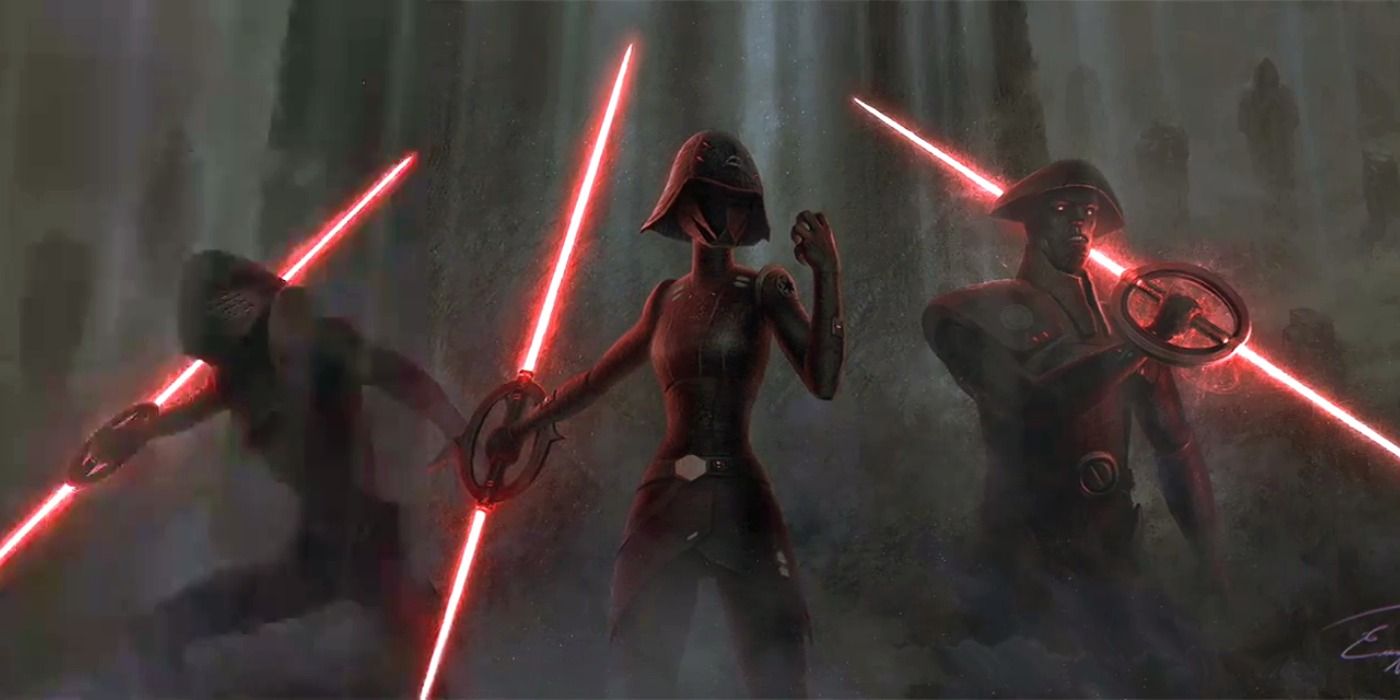The Star Wars saga’s Galactic Empire was ruled by two Sith Lords and enforced by dark side users, such as the Inquisitors, who were kept from becoming true Sith. The Sith Order was once brutish and overt in their methods, waging war with their ancient enemies, the Jedi, across the galaxy in numerous destructive wars. To ensure the survival of the Sith and their victory over the Jedi, Darth Bane established the Rule of Two, preventing more than two Dark Lords from existing at a time. The Rule of Two helped Palpatine gain control of the galaxy through the Galactic Empire, but his adherence to Bane’s rule wasn’t the only reason why his Inquisitors weren’t “true” Sith.
Darth Bane’s Rule of Two helped mitigate the Sith’s intrinsic in-fighting and changed their general strategy from brute strength to Machiavellian cunning. Once the Jedi Order was all but destroyed by the Jedi Purge and a Sith Lord ruled the galaxy, the Rule of Two was no longer needed. In some ways, Palpatine broke it by allowing so many dark side-using agents to serve him in the Empire, but he technically still followed Bane’s doctrine by only allowing himself and Vader to possess the full knowledge and power of Dark Lords. The Sith may be the most famous dark side-using religion, but they’re hardly the only ones.
Imperial Inquisitors first appeared in the Star Wars Legends continuity, which was the franchise’s official timeline until 2014. In the ongoing canon, however, the Inquisitors made their most well-known appearances in Star Wars Rebels and Jedi Fallen Order, which showcased their deadly lightsaber skills and command over the dark side. As the sinister, dark side-using agents of Vader and Palpatine, the Inquisitors are the go-to dark side antagonists in stories set between the original and prequel trilogies when a major character like Darth Vader wouldn’t be suitable. Despite their strength, however, the Inquisitors were deliberately kept from becoming genuine Sith in the canon continuity.
Star Wars Inquisitorius Explained
As explained in 2017’s Star Wars: Darth Vader comics, the Inquisitors were all once Jedi who survived Order 66 and the Jedi Purge, joining the Empire either by choice or resignation after prolonged torture. While not truly Sith, the Inquisitors wore their colors and used red-bladed lightsabers, weapons typically only used by Sith Lords and masters of the Knights of Ren. Inquisitorius is a sub-division of the Sith, serving the order without its official titles. Inquisitors were brutally trained by Palpatine and Vader, where they unlearned their Jedi beliefs and became accustomed to the draconian philosophies of the Sith Order. Inquisitors relied on weaponizing fear, using their reputation and spinning lightsabers to break the spirits of their prey before they capture or kill them. As shown at the end of Rebels season 1, even the most powerful Inquisitors can be defeated by a Force-sensitive who overcomes their fear of them.
The purpose of the Inquisitors was to seek out Jedi survivors of Order 66 and either kill them or torture them into Imperial service. Darth Vader and the Clone Troopers (when brainwashed by Order 66) wiped out most of the Jedi during Palpatine’s coup, but the Inquisitors were tasked with the long-term job of seeking hidden Jedi during the Empire’s reign. As shown in Rebels season 2, Inquisitors also abducted Force-sensitive younglings to prevent them from becoming a threat to Palpatine, likely intending to train them as Inquisitors as well. Inquisitorius were never intended to be a permanent part of the Empire’s hierarchy, and the organization was gone by the events of A New Hope.
How The Inquisitors Differ Between Canon and Legends
In the Star Wars Legends continuity, Palpatine and Vader were far more comfortable with other dark side users within the Empire. The ancient Sith splinter religion, the Prophets of the Dark Side, was formed by Darth Millennial in rejection of the Rule of Two but found a place within the Empire as tools of Palpatine. The Emperor’s most powerful agents were the Emperor’s Hands, whose ranks included Palpatine’s daughter, Mara Jade, and his eventual successor, Lumiya. Miscellaneous dark side users were referred to as Dark Side Adepts. The Inquisitors, however, were notably different from the canon counterparts, serving a similar purpose but having a stronger impact on galactic events.
Legends-era Inquisitors had a clearer place in the Imperial military hierarchy than their canon counterparts. As secretive members of Imperial Intelligence, the Inquisitors hunted down Jedi (or potential Force-sensitive threats) and either indoctrinated them into Imperial service via torture or killed them. Legends-era Inquisitors were not necessarily former Jedi, and they were trained much more thoroughly than in canon. Many Inquisitors became so powerful and familiar with Sith philosophy that they were almost Sith in all but name. The most famous Legends-era Inquisitor was Jerec, who embodied these qualities. A former Jedi who willfully joined the Empire, Jerec was an ambitious and scholarly Inquisitor who wished to usurp Vader and eventually Palpatine himself. Shortly after the events of Return of the Jedi, Jerec led a sizable detachment of the Imperial Pentastar Alignment on an expedition to Ruusan, but his schemes were thwarted by the aspiring Jedi Knight, Kyle Katarn.
Why Palpatine & Vader Kept Inquisitors From Becoming True Sith
The Rule of Two helped place Palpatine in his position of power, and bending it rather than breaking it helped The Emperor maintain his position after his successful coup. Palpatine was wise enough to prevent his dark side agents from becoming too powerful. If an Inquisitor became learned and powerful enough to become a Sith Lord, Palpatine would be threatened by them in addition to Vader, who constantly plots against his master in Sith tradition. Vader could also ally himself with a powerful-enough Inquisitor to usurp his master. By preventing the Inquisitors from becoming true Sith, Palpatine kept his potential usurpers in check.
Limiting the Inquisitors’ power was beneficial to Darth Vader as well. As the lesser of the two Dark Lords, Vader was constantly in danger of being replaced by a stronger dark side user. If Inquisitors were trained as true Sith, any one of them could potentially prove themselves more worthy of Vader’s position and replace him. With Vader and Palpatine’s limits placed on them, Inquisitors were just powerful enough to threaten padawans and Jedi Knights. As shown in Rebels season 2, they were no match for extraordinarily skillful Force users, like Ahsoka Tano and Maul. For the greatest threats, Darth Vader would step in to fight the battles that his Inquisitors couldn’t. By keeping the Star Wars franchise’s Inquisitors from becoming true Sith, Palpatine and Vader kept their positions within the Empire secure.




